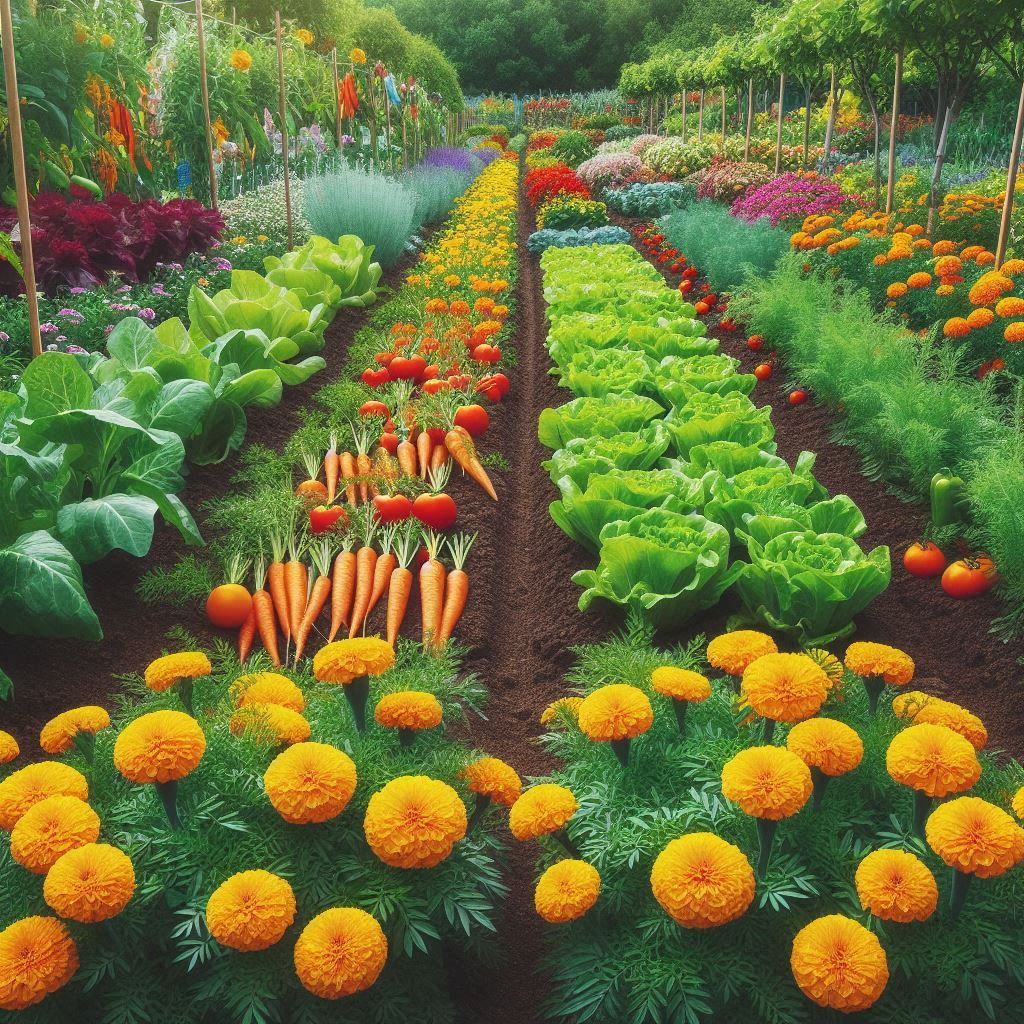Marigolds, those cheerful bursts of sunshine in shades of yellow, orange, and red, aren’t just beautiful additions to your garden. They’re hardworking companions that benefit your vegetable patch in surprising ways. Not only do they deter pesky insects with their strong scent, but they also attract beneficial pollinators like bees and butterflies that are crucial for healthy fruit and vegetable production. Plus, marigolds add a layer of beauty that brightens your garden and makes it an even more inviting space.
But where exactly should you plant these versatile flowers for maximum impact? Here are 11 strategic locations to integrate marigolds into your vegetable garden, transforming them from simple ornamentals into powerful allies:
1. A Colorful, Protective Border:

Plant marigolds around the perimeter of your raised beds or vegetable plots. This creates a visually stunning border while acting as a first line of defense against unwanted visitors. Choose marigold varieties that complement the height and aesthetic of your garden. Taller African marigolds work well for larger gardens, while French marigolds with their bushy, compact growth are perfect for raised beds or smaller spaces.
2. Disrupting the Pest Parade: Between Vegetable Rows

Don’t leave empty spaces between your vegetable rows! Plant marigolds in these gaps to disrupt the movement of pests like aphids, whiteflies, and beetles. Marigolds also act as a living mulch, helping to suppress weeds and retain moisture in the soil. Here, select low-growing marigold varieties like signet or gem marigolds to avoid shading your vegetables. Ensure proper spacing to allow for good airflow and prevent competition for resources.
3. Luring Away the Enemy: Strategic Trap Crops
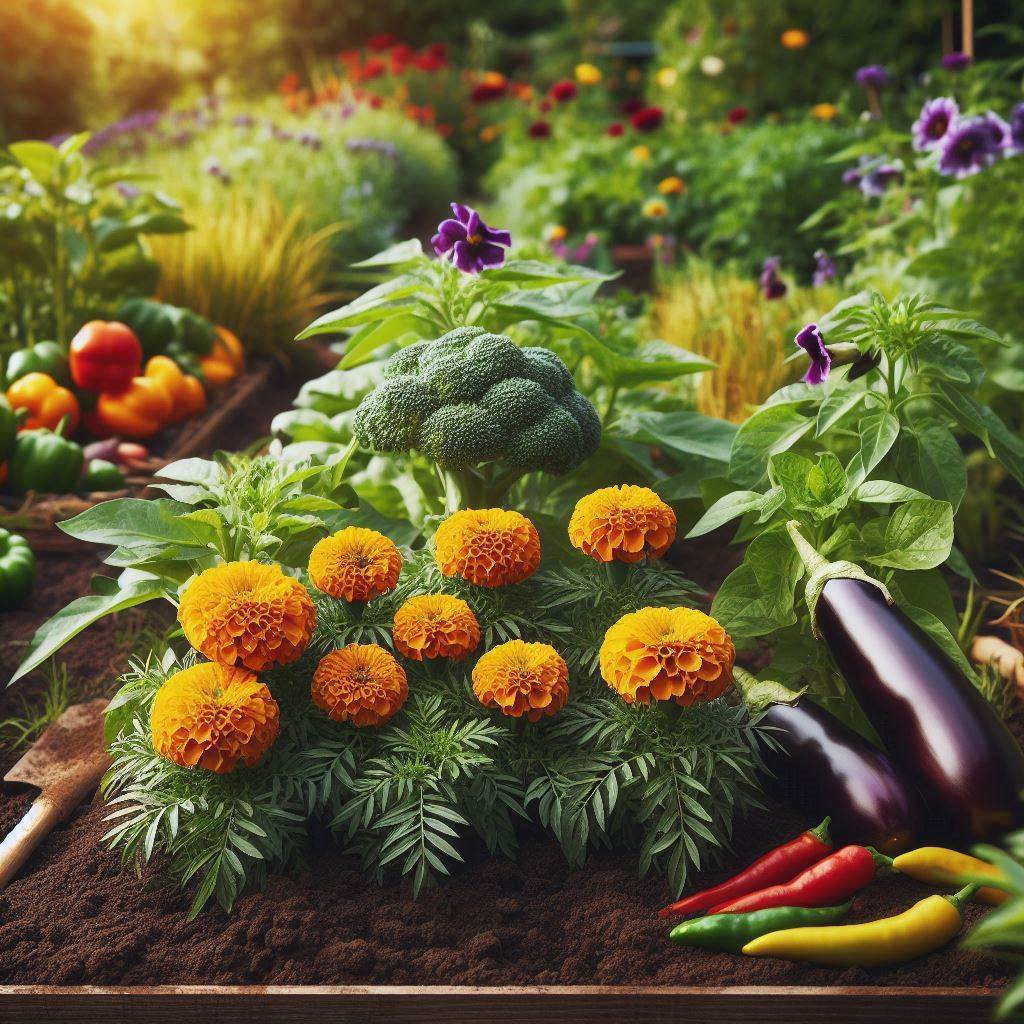
Did you know marigolds can be used as trap crops? Certain pests, like thrips and some types of caterpillars, are particularly attracted to marigolds. Plant marigolds strategically near vulnerable crops like peppers or eggplants. The pests will be drawn to the marigolds first, giving your vegetables a fighting chance. Once the marigolds become heavily infested, simply remove and destroy them to eliminate the pest population.
4. Maximizing Space and Benefits: Interplanting Within Rows
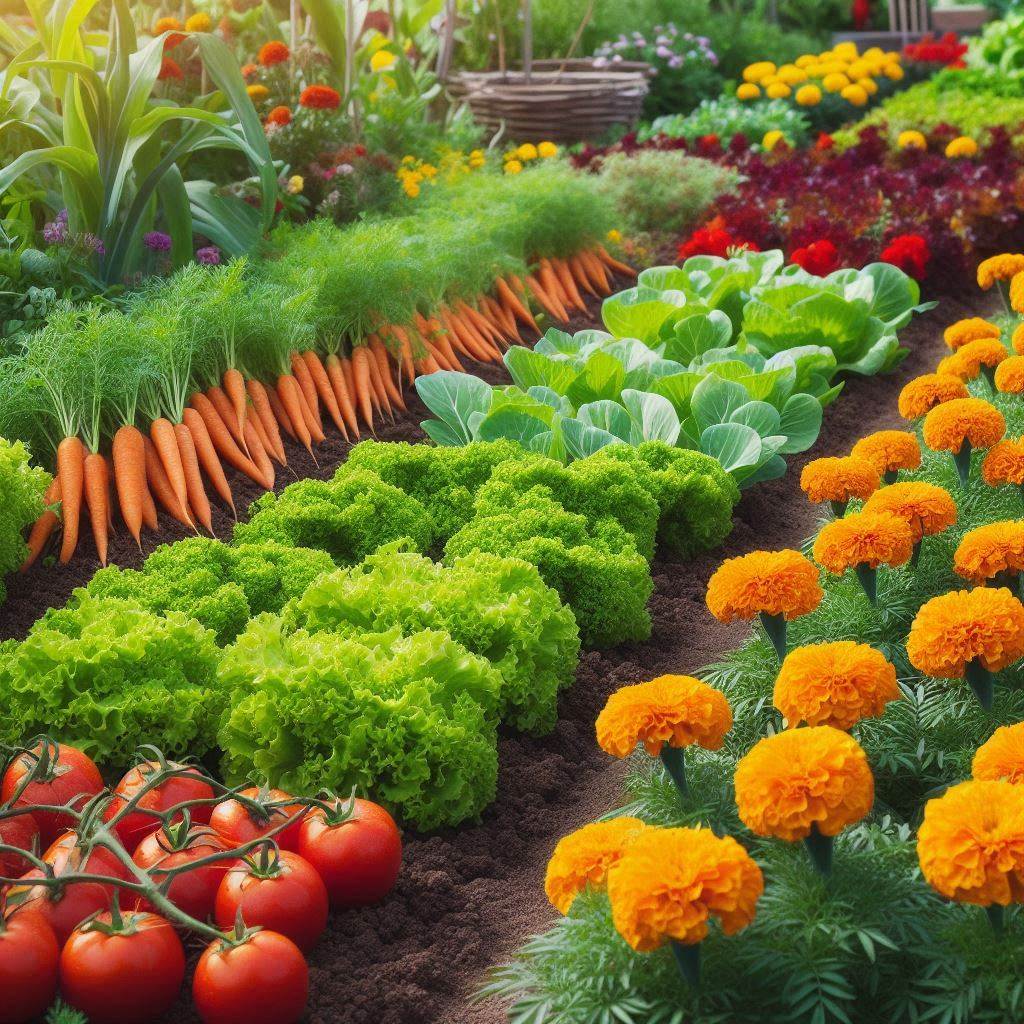
Marigolds are space-saving superstars! Interplant them directly within your vegetable rows, particularly where you have taller vegetables like tomatoes or corn. This maximizes your garden’s real estate while providing continuous pest control and attracting beneficial pollinators. Choose marigold varieties that grow well with your specific vegetables. Avoid smothering smaller plants with large, bushy marigolds. Opt for smaller varieties like signet marigolds or single French marigolds.
5. Protecting Against Microscopic Threats: Near Nematode-Prone Plants
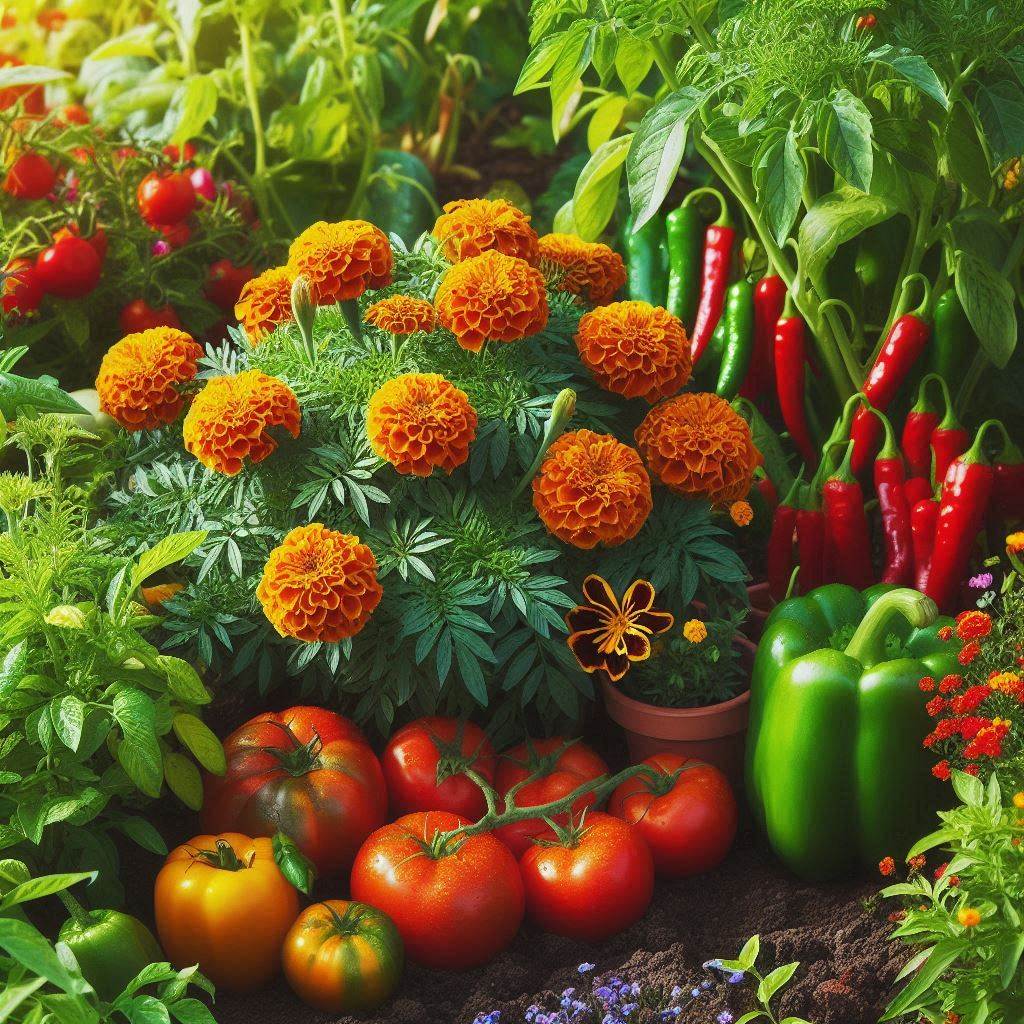
French marigolds are particularly effective against nematodes, microscopic worms that damage plant roots. If you’re planting vegetables susceptible to nematodes like tomatoes, peppers, beans, or squash, consider incorporating French marigolds into your planting scheme. Plant them alongside or even slightly before your vegetables to give them a head start in deterring these destructive pests.
6. Masking the Irresistible Scent: Near Strong-Scented Vegetables
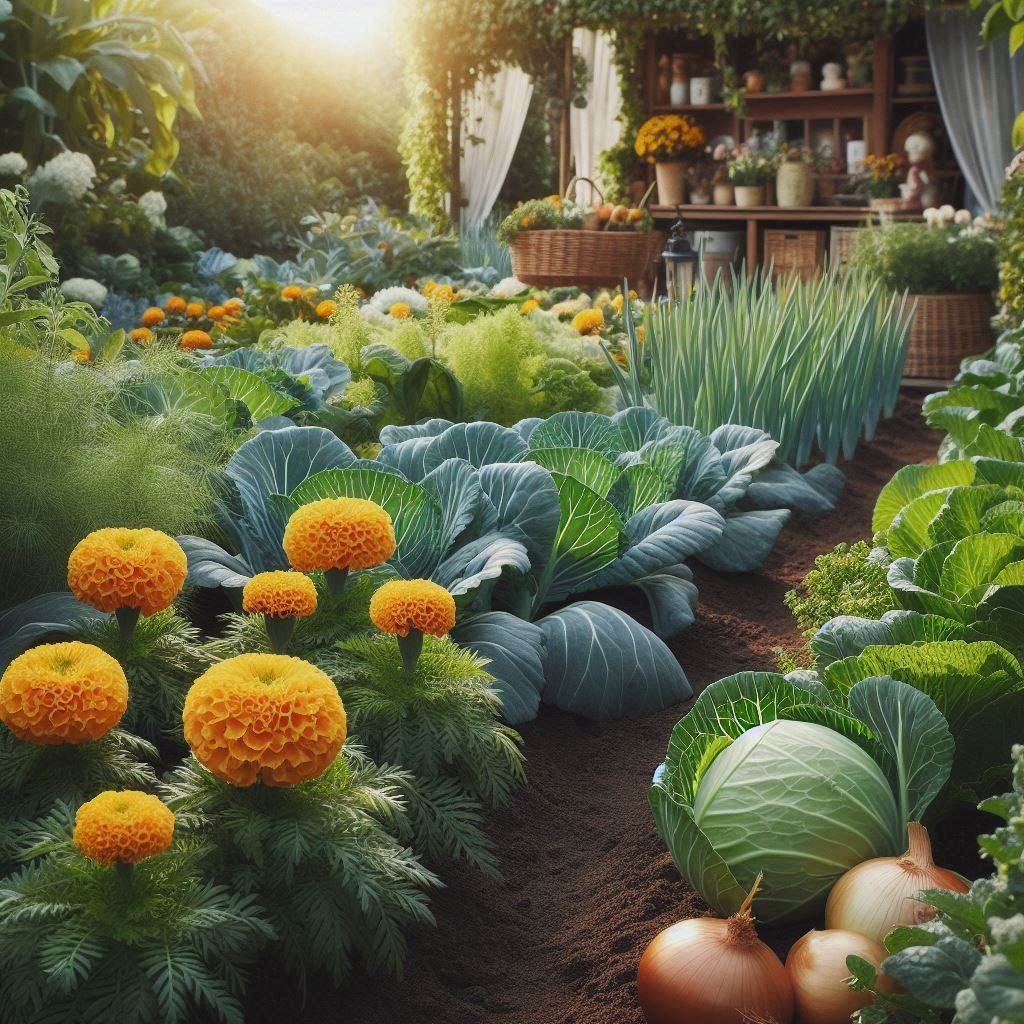
Some vegetables, like onions or cabbage, have strong scents that can attract unwanted pests. Marigolds, with their own distinct fragrance, can help mask these scents and make your vegetable patch less inviting to these insects. Plant marigolds downwind of strong-smelling vegetables to take maximum advantage of their masking ability.
7. Adding Beauty and Benefits to Fruit Trees

Marigolds aren’t just for vegetable gardens! They can be beneficial companions for fruit trees as well. The vibrant blooms add a touch of color and cheer, while deterring some pests and attracting pollinators that also benefit your fruit trees. Choose marigold varieties that won’t compete with your trees for resources. Opt for smaller, bushier varieties and plant them at a distance to avoid shading the base of the tree.
8. Keeping the Compost Pile Company (and the Flies Away)
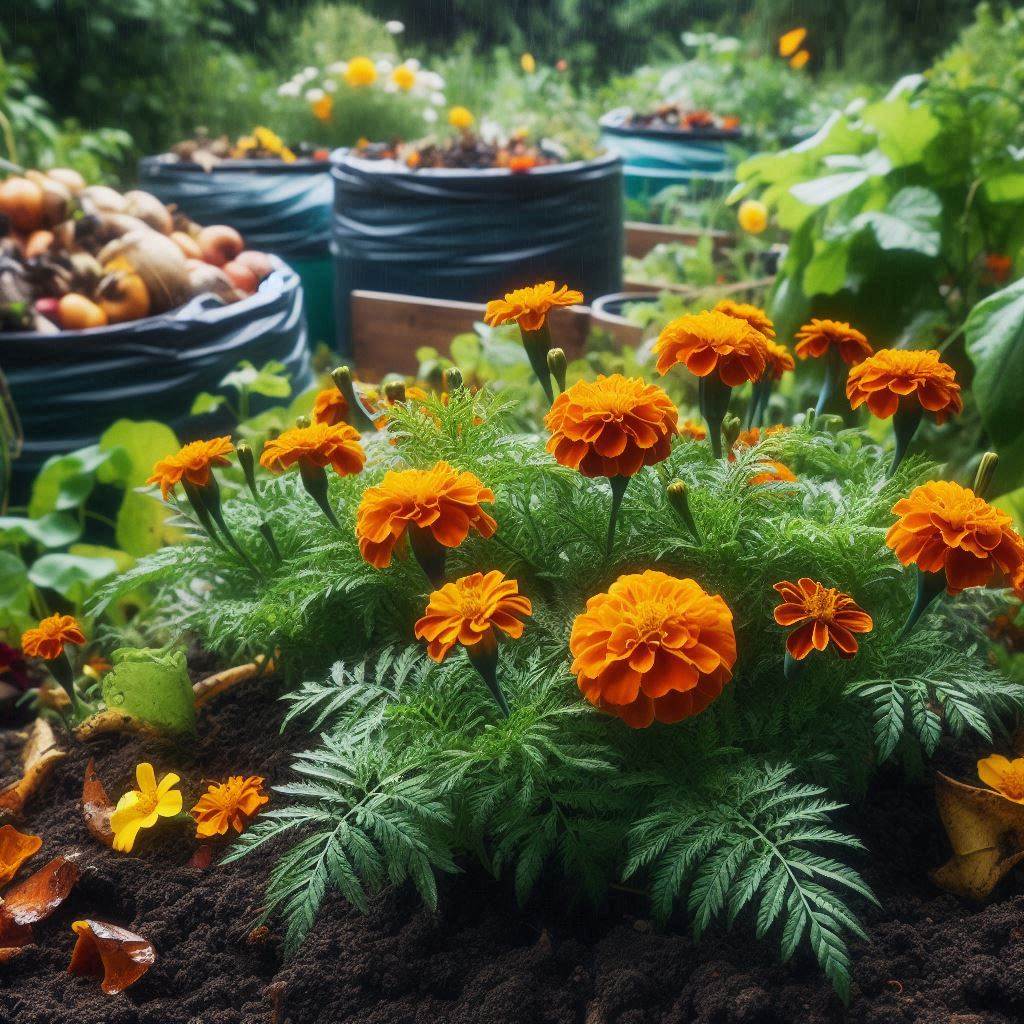
Compost piles are essential for creating nutrient-rich soil for your garden, but they can also attract unwanted flies and other pests. Planting marigolds downwind of your compost pile can help deter these pests with their strong scent. This keeps your composting process running smoothly while adding a touch of beauty to your garden.
9. Taking Vertical Gardening to New Heights (and with Fewer Pests)
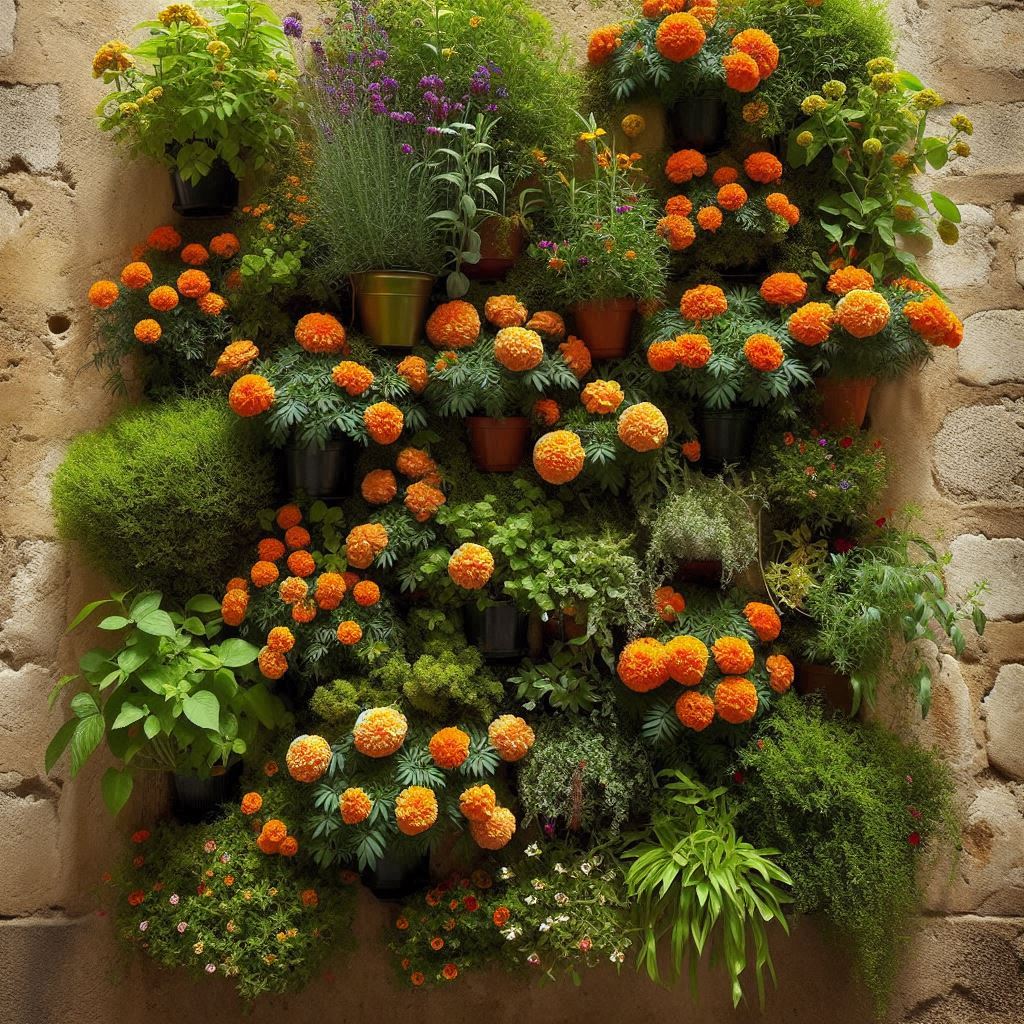
Don’t limit marigolds to traditional garden beds! They’re perfect for adding color and pest control to vertical gardens and container plantings. Choose compact marigold varieties like signet marigolds or dwarf African marigolds that are well-suited to the size and sun exposure of your containers.
10. Repelling Pests While the Soil Rests: Planting After Harvest

Even after you’ve harvested your delicious vegetables, your garden beds can benefit from marigolds. Planting marigolds in areas where you’ll be planting susceptible vegetables next season is a smart strategy. They’ll help deter pests and suppress soil-borne diseases while the soil rests and replenishes nutrients. This is particularly beneficial for deterring root knot nematodes and other soil-borne pathogens that can damage your next crop. Consider planting marigolds after harvesting vegetables like potatoes, tomatoes, or peppers, which are especially vulnerable to these pests.
11. Companion Planting with Specific Vegetables:
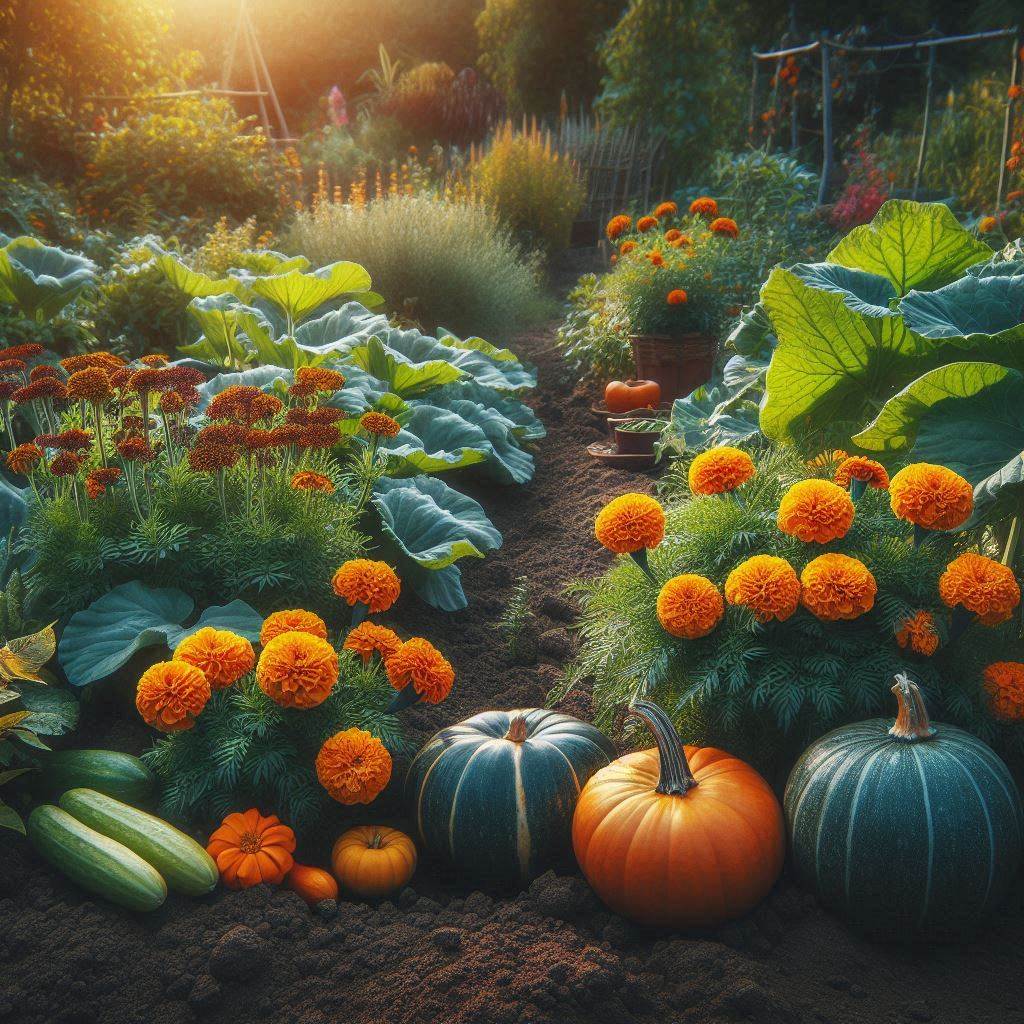
Marigolds aren’t just beautiful; they’re also beneficial companions for many vegetables. Here’s a quick reference table to help you choose the right marigold pairings for your garden:
| Vegetable | Recommended Marigold Variety | Benefits |
| Tomatoes, Peppers, Eggplant | French Marigolds | Deters aphids, whiteflies, nematodes |
| Beans, Peas | Bushy French Marigolds | Deters beetles, improves pollination |
| Squash, Pumpkins, Cucumbers | Tall African Marigolds | Deters squash bugs, attracts beneficial pollinators |
| Lettuce, Greens | Signet Marigolds | Deters aphids, improves air circulation |
| Onions, Garlic | French Marigolds | Masks strong scents, deters some pests |
Wrapping Up
Try incorporating marigolds into your vegetable garden in these strategic ways and you’ll create a thriving ecosystem that benefits both your plants and your harvest. They’ll deter pests, attract pollinators, and add a touch of beauty, all while helping to maintain healthy soil. Remember, experimentation is key! Observe what works best in your garden and adjust your marigold planting strategy accordingly.
Do you have any favorite ways to use marigolds in your vegetable garden? Share your tips and experiences in the comments below! Let’s create a community of gardeners who are growing healthy and vibrant food while keeping pests at bay with the help of these versatile and beautiful flowers.

